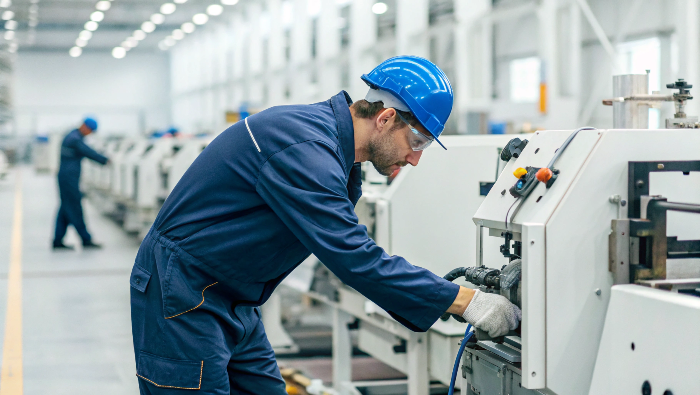9 Surprising Breakdown Maintenance Benefits Every Firm Must Know

Unexpected equipment failures can disrupt production, drain budgets, and frustrate managers. These breakdowns often cause costly delays and safety risks that disrupt smooth operations. Many firms struggle to manage these challenges effectively. Breakdown maintenance addresses failures directly, turning problems into practical solutions. In this blog, we explore 9 surprising breakdown maintenance benefits every firm must know for lasting efficiency and reliability.
What is Breakdown Maintenance?
Many business leaders ask, “What is breakdown maintenance, and how does it work in practice?” It is a maintenance strategy where repairs are made only after equipment fails or stops functioning. While it might sound reactive, it often works well in specific industries and scenarios where preventive maintenance is unnecessary or costly.
This approach can be applied to non-critical equipment or tools that are inexpensive and easy to replace. For certain businesses, it offers a cost-effective solution compared to routine servicing. However, the key is to understand when and how to use it for maximum benefit.
-
Applied when equipment failure doesn’t disrupt major operations.
-
Works best for low-cost or easily replaceable assets.
-
Saves time by reducing unnecessary preventive inspections.
-
Helps businesses allocate resources more strategically.
Top 9 Benefits of Breakdown Maintenance
Breakdown management maintenance system are often misunderstood as purely reactive, yet they carry unique advantages that many firms overlook. When applied strategically, it can reduce costs, simplify planning, and support smarter resource allocation. Instead of wasting effort on unnecessary checks, businesses can focus on efficiency. Below are 9 surprising benefits that show why this approach still matters today:
1: Cost Savings From Reduced Unnecessary Inspections
Routine preventive checks often require labor, tools, and time, even when equipment is working perfectly. Breakdown maintenance eliminates these recurring costs for non-critical assets. Firms save money by repairing only when failures happen.
-
Eliminates needless service costs.
-
Reduces wasted labor hours.
-
Improves budget allocation for higher-value assets.
2: Faster Decision-Making During Failures
When a breakdown occurs, decisions are made on the spot. This promotes quick problem-solving and avoids delays from unnecessary layers of preventive planning. The simplicity of this process supports operational agility.
-
Encourages immediate problem resolution.
-
Reduces administrative tasks tied to planning.
-
Improves flexibility during urgent repairs.
3: Reduced Downtime for Low-Priority Equipment
Some machines are not essential for day-to-day operations. Instead of maintaining them frequently, firms can wait until they fail, which keeps maintenance tasks from interrupting other workflows. This reduces downtime from excessive maintenance checks.
-
Keeps focus on critical assets.
-
Ensures smooth workflow for important machines.
-
Limits interruptions for non-essential equipment.
4: Lower Initial Maintenance Investment
Not all businesses can afford heavy preventive programs. Breakdown maintenance offers an affordable alternative for firms with smaller budgets, especially when managing non-critical equipment.
-
Ideal for small businesses.
-
Cuts upfront program costs.
-
Helps organizations operate within financial limits.
5: Simplifies Maintenance Planning
Complex schedules, constant tracking, and preventive cycles can overwhelm teams. This creates confusion and unnecessary workload for already busy staff. Breakdown management maintenance system simplifies planning by focusing only on repairs when required.
-
Easy to manage for small teams.
-
Reduces paperwork and scheduling tasks.
-
Improves efficiency in planning workloads.
6: Effective for Predictable Failure Patterns
Some equipment has clear and predictable failure timelines. When patterns are obvious, preventive checks may not provide much added value. For such assets, letting them run until failure can be more efficient.
-
Works for equipment with consistent lifespans.
-
Minimizes wasted inspections.
-
Ensures cost-effective repairs at the right time.
7: Reduces Spare Parts Stocking Needs
Preventive maintenance often requires businesses to hold extra spare parts on hand. Breakdown management maintenance lowers the need for large inventories, freeing up space and reducing storage costs.
-
Cuts warehouse costs.
-
Prevents stockpiling unnecessary parts.
-
Optimizes supply chain management.
8: Prioritizes Critical Assets
By reducing time spent on minor equipment, teams can focus more on vital machinery. This balance helps organizations protect the equipment that drives production and revenue. It ensures that the most important assets receive attention and resources when they need it most.
-
Improves asset prioritization.
-
Strengthens the reliability of mission-critical machines.
-
Creates smarter resource allocation.
9: Encourages Continuous Improvement Culture
Every breakdown provides insights into asset performance. Over time, these events build valuable data that can guide future strategies, encouraging a culture of continuous improvement.
-
Generates real-time performance data.
-
Improves long-term maintenance strategies.
-
Builds learning opportunities for teams.
Conclusion
Breakdown maintenance is more than a reactive approach. It brings clear benefits like reduced costs, simplified planning, and better focus on critical assets. By understanding when to apply it, firms can optimize efficiency and performance. These 9 surprising benefits show that the breakdown management maintenance system is still a valuable strategy for modern businesses aiming for growth and control.
Boost operational performance with breakdown maintenance solutions from MicroMain. Our proven strategies and tools help you manage assets effectively while achieving cost savings and long-term reliability.
FAQs
What is breakdown maintenance?
Breakdown maintenance is a strategy where repairs are done only after equipment fails.
Is breakdown management maintenance suitable for all equipment?
No, it works best for non-critical or low-cost assets.
What is the main benefit of breakdown management?
The main benefit is reducing unnecessary inspection and repair costs.







